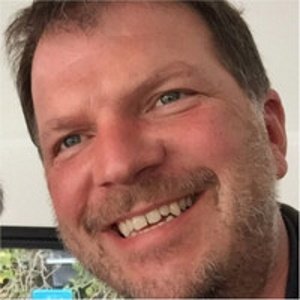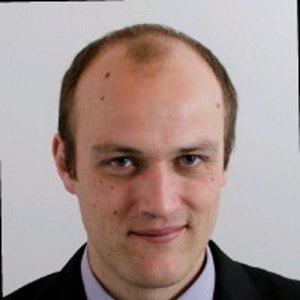International Maritime Organization (IMO) - Experts & Thought Leaders
Latest International Maritime Organization (IMO) news & announcements
KR (Korean Register) has released the latest edition of KR-CON, version 23, a comprehensive digital database encompassing nearly all International Maritime Organization (IMO) instruments. KR-CON has been widely used by maritime professionals and government agencies worldwide since its launch in 2000, providing easy access to IMO documents on both PC and mobile devices. Its widespread adoption highlights its convenience and technological excellence as one of KR’s flagship services. Future amendments and new documents These updates include revisions to the International Convention for the SOLAS and MARPOL The 23rd edition of KR-CON incorporates amendments adopted at the 108th session of the IMO’s Maritime Safety Committee (MSC) and the 82nd session of the Marine Environment Protection Committee (MEPC) held in 2024. These updates include revisions to the International Convention for the Safety of Life at Sea (SOLAS) and the International Convention for the Prevention of Pollution from Ships (MARPOL). Future amendments and new documents will continue to be updated accordingly. Installation version of KR-CON Lee Jungkun, General Manager of KR’s Convention & Legislation Service Team who spearheaded the development of KR-CON, stated, "In this latest web installation version of KR-CON, we have enhanced user convenience by clearly displaying update dates, version information, and recently added documents. Additionally, starting in June, we plan to introduce a beta version of an AI chatbot, marking the beginning of ongoing AI-driven enhancements to KR-CON." KR-CON is now accessible via multiple platforms, including a website, a mobile application, USB, and web installation version. It offers a wealth of resources such as IMO instruments, codes, resolutions, and circulars.
“The IMO really has to step up now if we are to deliver on the pace and scale of the change required. A lot of this comes down to the question of how we address the significant price differential between fossil and alternative fuels. The IMO holds the keys to all of this, and the time for action is now. Whether we as an industry can make 2050 rests largely with the IMO and how it performs in the coming months.” That was the message to the industry from ABS Chairman and CEO Christopher J. Wiernicki speaking at the Capital Link Singapore Maritime Forum. Net zero by 2050 Wiernicki said the present trajectory would see the industry fall well short of its 2050 targets: “The headline is that something is really going to have to bend the curve if we want to make net zero by 2050 a reality, because we are currently way off the pace and scale of change that we will need. Fortunately, our destiny remains in our hands: we are not done yet." "But success will now surely be a function of what the IMO does next. We need clarity and consistency and a level playing field for the whole industry. Right now, the industry is divided, and there is no clear way forward.” Adoption of alternate fuels IMO to show leadership in supporting the adoption of alternative fuels Wiernicki said the industry is looking to the IMO to show leadership in supporting adoption of alternate fuels, a necessary and key step before new nuclear technology becomes available and appropriately regulated, a function of governments. “We know the bookends. It starts with oil and gas, with LNG and carbon capture. The long term increasingly favours nuclear if we want to make net zero by 2050 a reality. The key question for all of us today is what is going to drive the story in the middle?” he said. Success in the decarbonisation of shipping “The mid game looks like a mix of biofuels, methanol and ammonia, and it is the IMO that is going to have to drive this." "While it is true that success in the decarbonisation of shipping will be a team sport, we will certainly need our captain to play a decisive role. Now is the time for the IMO to show strength and leadership.”
Increasing incidents of interference with aviation, maritime and other satellite telecommunications services mean states must urgently enhance the protection of a critical radio-frequency band, the International Civil Aviation Organization (ICAO), International Telecommunication Union (ITU) and International Maritime Organization (IMO) said with ‘grave concern’ in a joint statement. These cases of harmful interference are in the form of jamming and spoofing that disrupt Global Navigation Satellite Systems (GNSS) operating in the frequency bands allocated to the Radio Navigation Satellite Service (RNSS). Global Navigation Satellite Systems (GNSS) Global Navigation Satellite Systems are constellations of Earth-orbiting satellites that provide positioning, navigation services Global Navigation Satellite Systems (GNSS) are constellations of Earth-orbiting satellites that provide positioning, navigation and timing services worldwide that are critical for the safety and efficiency of civilian aircraft, maritime vessels, humanitarian assistance vehicles, as well as for time synchronisation of telecommunications networks. "Global Navigation Satellite Systems are critical to our safety on land, at sea and in the air," said ITU Secretary-General - Doreen Bogdan-Martin, adding "Member States should ensure the uninterrupted operation of these systems for everyone’s safety and the resilience of essential services that our lives depend on." The joint statement cosigned by the three UN agencies requests Members States to: Protect the RNSS from transmissions that can adversely cause harmful interference degrading, interrupting or misleading signals used for civilian and humanitarian purposes; Reinforce resilience of the systems, which rely on RNSS for navigation, positioning and timing in relation to this type of interference; Retain sufficient conventional navigation infrastructure for contingency support, in case of RNSS outages and misleading signals, and develop mitigation techniques for loss of services; Increase collaboration between radio regulatory, civil aviation, maritime, defence and enforcement authorities; and Report cases of harmful interference affecting RNSS to the appropriate telecommunication, aeronautical and maritime authorities, and to the ITU Radiocommunications Bureau, to enable the monitoring of the situation. Protect radiocommunications systems from interference "Protecting radiocommunications systems from harmful interference is at the core of ITU’s mandate," said Mario Maniewicz, Director of the ITU Radiocommunication Bureau. He adds, "We call on our members to make responsible use of the radiofrequency spectrum, which is a precious, natural and shared resource we rely on for communicating, travelling and working in our daily lives." Jamming Jamming is an unnecessary transmission, or the transmission of superfluous signals, or the transmission of signals without identification. Spoofing is the broadcast of GNSS-like signals that can cause a GNSS receiver in a vessel or aircraft to calculate erroneous positions and provide false guidance. ITU’s Radiocommunication Bureau supports the global management of radio-frequencies in accordance with the Radio Regulations, the international treaty on shared use of the radio-frequency spectrum.
Insights & Opinions from thought leaders at International Maritime Organization (IMO)
Liquid natural gas (LNG) can avoid concerns about global warming in the maritime industry – to a point. LNG is a carbon-based fuel but yields lower emissions than current fuels used in the maritime industry, thus enabling compliance with International Maritime Organization (IMO) goals to address greenhouse gas emissions. LNG offers an attractive transition route until even more environmentally friendly approaches become practical, although costs to transition existing vessels to LNG are cost-prohibitive. LNG is gaining more favour among dual-fuel new building contracts, using either LNG or conventional liquid marine fuels. Pre-liquefaction process When natural gas is cooled to minus 162 degrees C (minus 259 degrees F), it turns it into a liquid. Liquefaction reduces the volume to 1/600 of that of gas. Emissions from LNG are drastically lower than those of traditional heavy fuel oil. LNG removes sulphur in the pre-liquefaction process, so it emits almost no sulphur oxides (SOx) or particulate matter (PM) when burned, and it emits 90% less nitrogen oxide (NOx), and about a fourth less carbon dioxide (CO2). Emissions from LNG are drastically lower than those of traditional heavy fuel oil LNG is also relatively safe because its specific gravity is lighter than air, it is easy to diffuse, and there is less risk of explosion. One concern for transitioning to LNG is bunkering, in effect, the need for more supply infrastructure at port facilities to serve LNG-powered ships. Currently, the bunkering infrastructure can deliver LNG to 96 ports, with an additional 55 ports in the process of transitioning. There has also been an increase in ship-to-ship bunkering. Reducing CO2 emissions Although transitioning older ships to LNG is expensive, so are the alternatives, such as scrubbers and very low sulphur fuel oil (VLSFO). Because VLSFO does not affect CO2 emissions, the fuel is inadequate to achieve the IMO goal of reducing CO2 emissions by more than 40% in 2030 compared to 2008. The Poseidon Principles are a framework for integrating climate consideration into lending decisions to promote decarbonisation. The framework is prompting some lenders to favour financing of LNG-powered vessels over those using traditional fuel oil. Transitioning to LNG can help fill the gap until new decarbonisation technologies come online and become more practical, including hydrogen, ammonia, rotor sail/batteries and methanol. Deep-sea shipping LNG is the only alternative to traditional marine fuel oils that is commercially variable for deep-sea shipping Since the first LNG-fuelled vessel came into service in 2000, the number of vessels using LNG has grown 20% to 40% per year. In 2020, there were 175 LNG-fuelled ships in operation, and another 200 on order. These numbers are in addition to the 600 or so LNG carriers, which use boil-off gas in their propulsion systems. By investing in LNG-fuelled vessels now, ship owners can realise immediate greenhouse gas (GHG) benefits – up to 28% on a tank-to-wake basis, including the impact of methane emissions, says SEA-LNG, a multi-sector industry coalition seeking to accelerate the adoption of liquefied natural gas. LNG is the only alternative to traditional marine fuel oils that is commercially variable for deep-sea shipping, says SEA-LNG. Worldwide gas consumption LNG is a widely available global commodity with 21 countries exporting to 42 importers and accounting for approximately 11% of worldwide gas consumption. Currently, LNG is a tight market, as strong power and gas demand in Asia has pulled LNG away from Europe. Combining to tighten the market is a 2021 post-COVID economic recovery and a cold winter in 2021. LNG buyers seeking to avoid shortages in the winter of 2022 triggered a price rally. Drought in South America has further limited hydroelectric output and pulled volume from the Atlantic’s LNG supply. Also, several LNG facilities experienced outages that decreased supply.

















